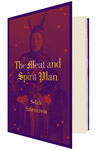Not enough has been written about how punctuation creates a mood, a style. Or perhaps the lack of punctuation: eschewing certain marks can force the writer to sustain a mood. She might fail to use quotation marks when a character speaks and then decide she likes it that way. Absence is a useful constraint.
Selah Saterstrom’s second novel begins with the word Listen, in roman, and ends with Listen, italics. We listen. We listen to the nameless narrator tell us about her misspent youth, bad boys and really bad boys, dead-end kids in the American South: “We are trying to have a picnic but no one knows how.” Our narrator goes to reform school, college, Scotland, somehow for a degree in religion, despair and freedom tangled throughout. Then back to the States for hallucinations or perhaps lucid dreaming.
No semicolons. No quotation marks. A handful of dashes toward the end but otherwise no dashes. The most intense episodes are carved in the most patient prose.
We turn the pages, each paragraph with its own little cordon sanitaire: the white of the line space helps cut through the teenage grime, bad vibes. It sharpens our sense of the beauty in a sentence such as “Everyone is passed out in the hallway or in the Kitchen Slash Den.”
Lyrics from metal songs float away from their sources to serve as chapter headings.
“I offer him flowers. I provide him with flowers. I provide one with flowers,” run the lyrics to the narrator’s favorite song. She learned it in a class and thinks it perfectly captures her love for Jack, with whom she “hooked up over orientation weekend.” The teacher tells her it’s a song the Aztecs sang to their gods before conducting human sacrifice.
No exclamation points till the end.
I am writing this on an old manual typewriter. It has a period key and a question mark key but no exclamation point key. To form one you can hit the stiff apostrophe, which has the shift position above the 8, and then backspace and punch in a period underneath, a snug fit, legible enough.
But who has the time? The exclamation point needs to happen in a burst, spontaneous. The exclamation point, I once read, is a slenderizing of the word Io, for joy.
Joy is not the point of The...
You have reached your article limit
Sign up for a digital subscription and continue reading all new issues, plus our entire archives, for just $1.50/month.
Already a subscriber? Sign in





